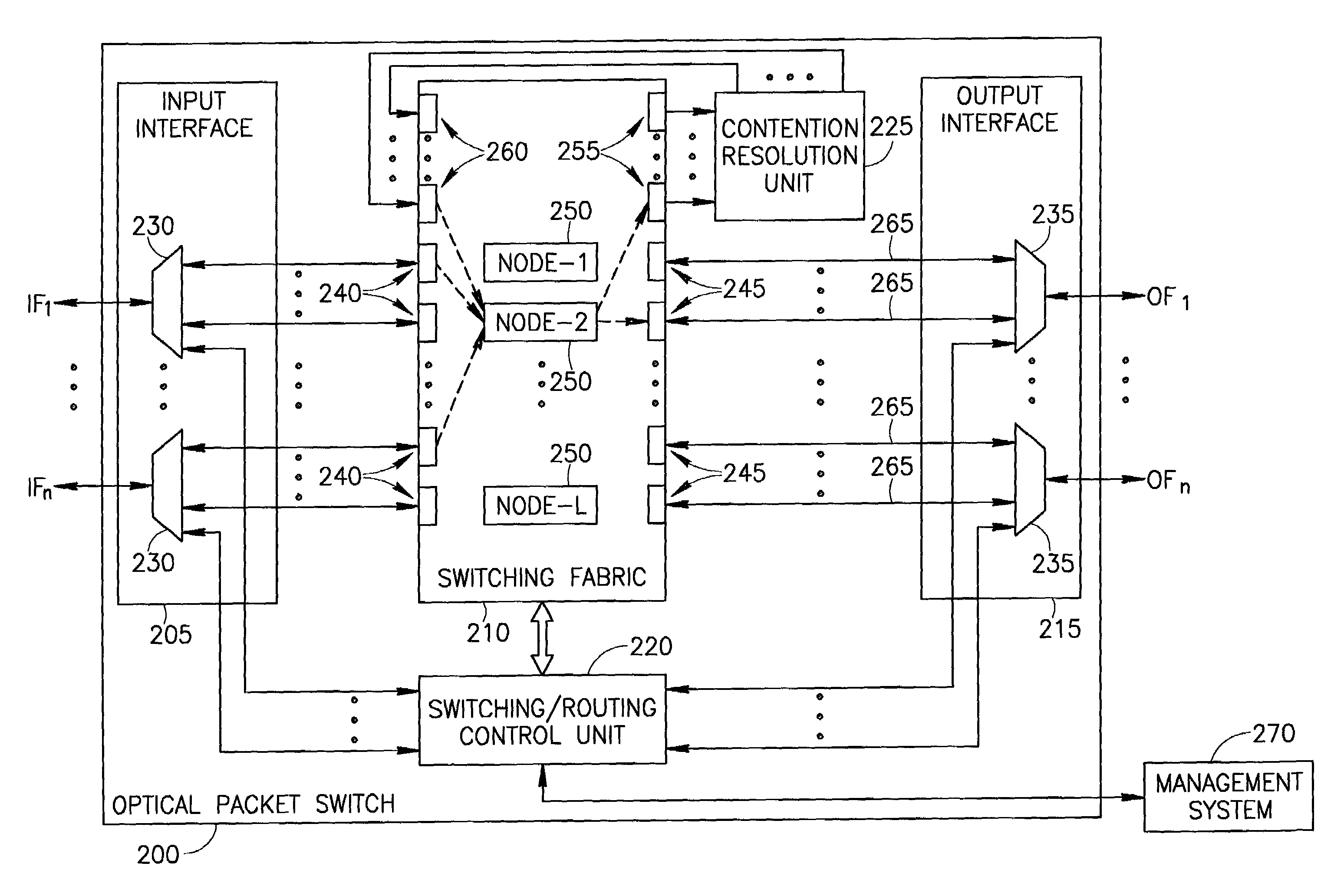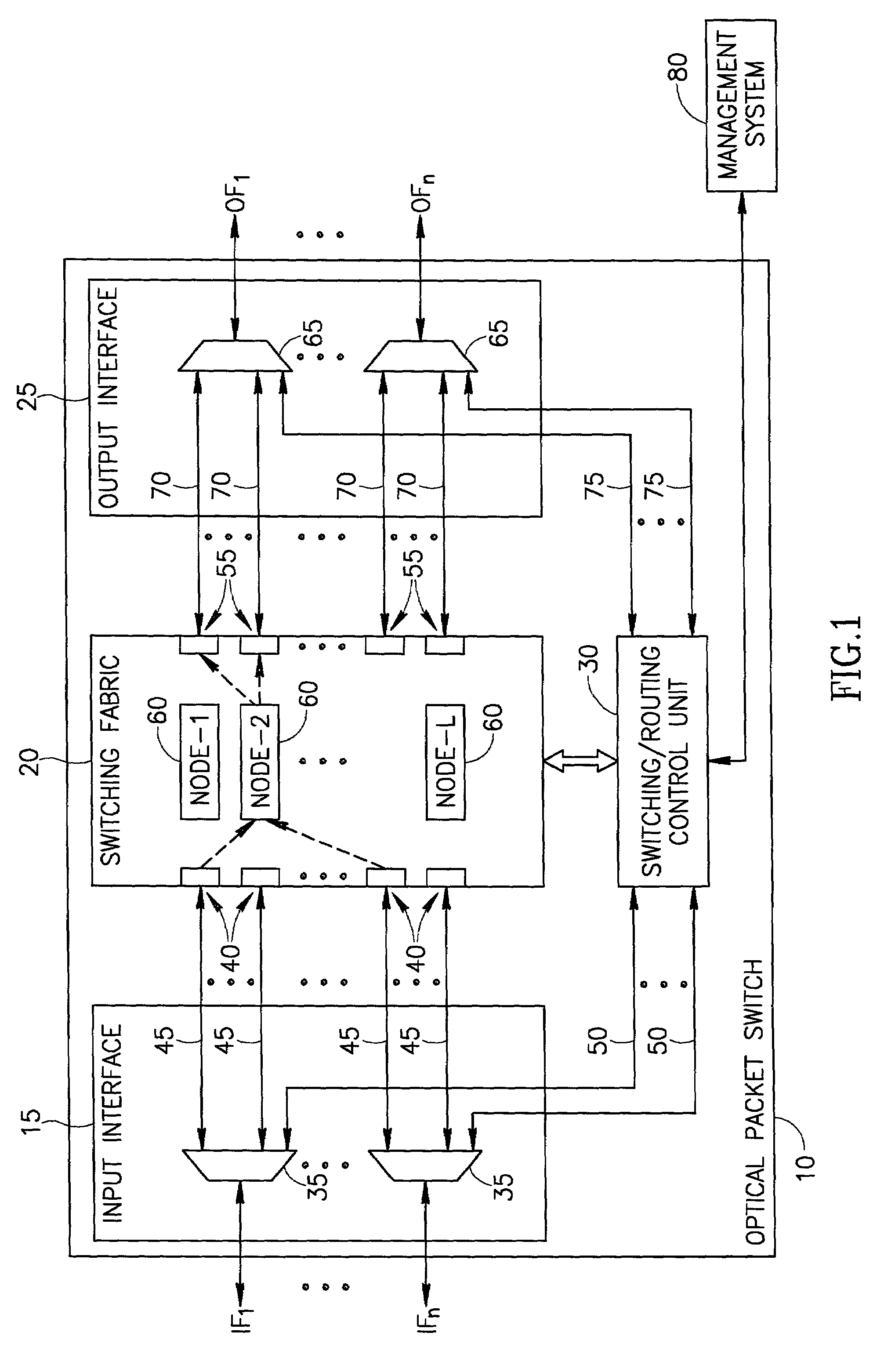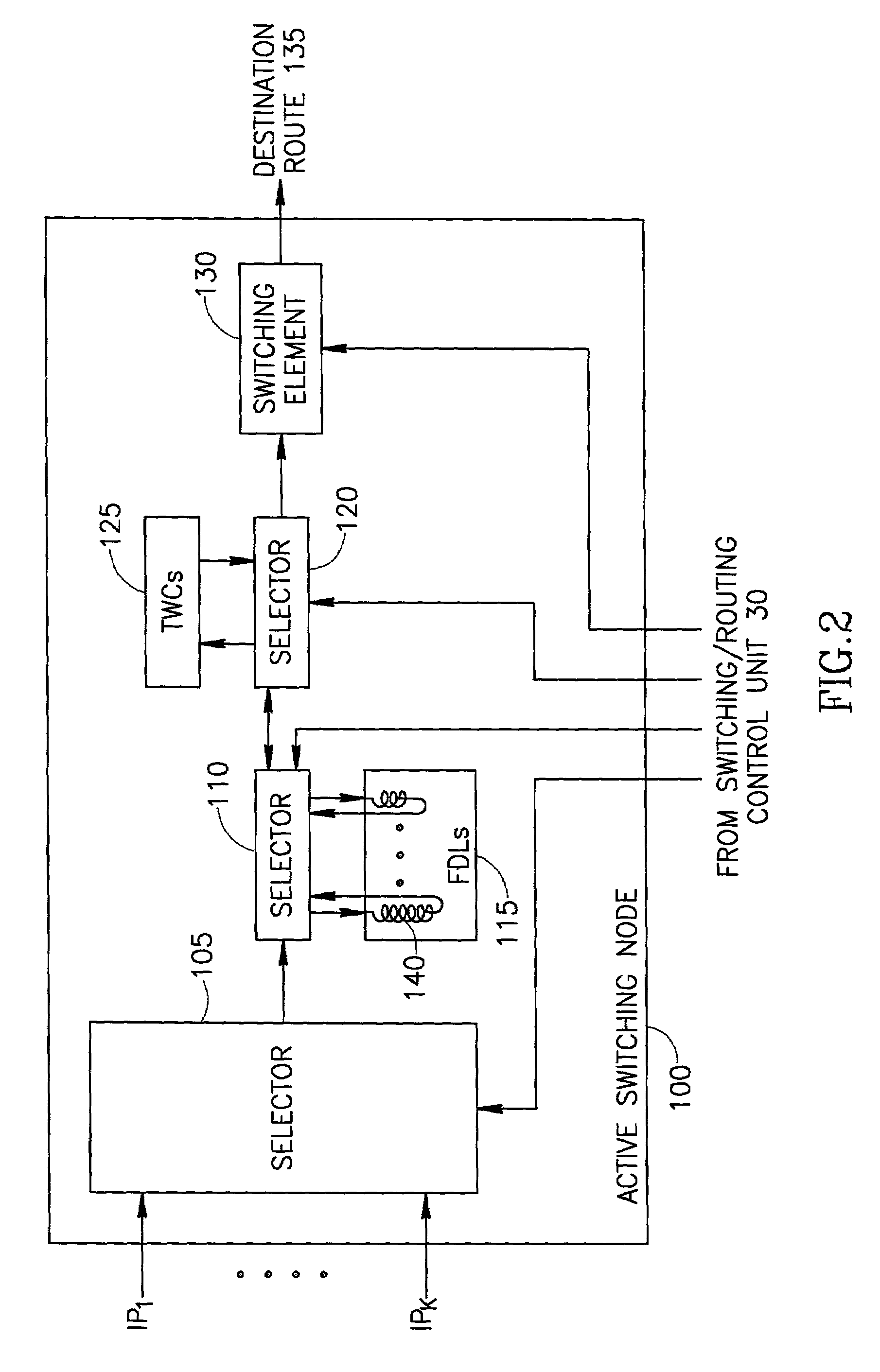Optical packet switching apparatus and methods
a packet switching and optical packet technology, applied in the field of optical communication networks, can solve the problems of increasing computation complexity, reducing the efficiency of optical packet transmission, so as to improve optical packet switching and routing.
- Summary
- Abstract
- Description
- Claims
- Application Information
AI Technical Summary
Benefits of technology
Problems solved by technology
Method used
Image
Examples
Embodiment Construction
[0112]Reference is now made to FIG. 1 which is a simplified block diagram illustration of a preferred implementation of an optical packet switch 10, the optical packet switch 10 being constructed and operative in accordance with a preferred embodiment of the present invention.
[0113]The optical packet switch 10 preferably includes the following elements: an input interface 15; a switching fabric 20; an output interface 25; and a switching / routing control unit 30.
[0114]The input interface 15 is preferably operatively associated with a plurality of incoming fibers (IFs), such as n incoming fibers IF1, . . . , IFn where n is an integer. The n incoming fibers IF1, . . . , IFn. are preferably respectively coupled to n optical demultiplexers 35 in the input interface 15. The n optical demultiplexers 35 are operative to demultiplex optical signals carried by the incoming fibers IF1, . . . , IFn and to provide optical packets carrying information to a plurality of input ports 40 of the switc...
PUM
 Login to View More
Login to View More Abstract
Description
Claims
Application Information
 Login to View More
Login to View More - R&D
- Intellectual Property
- Life Sciences
- Materials
- Tech Scout
- Unparalleled Data Quality
- Higher Quality Content
- 60% Fewer Hallucinations
Browse by: Latest US Patents, China's latest patents, Technical Efficacy Thesaurus, Application Domain, Technology Topic, Popular Technical Reports.
© 2025 PatSnap. All rights reserved.Legal|Privacy policy|Modern Slavery Act Transparency Statement|Sitemap|About US| Contact US: help@patsnap.com



